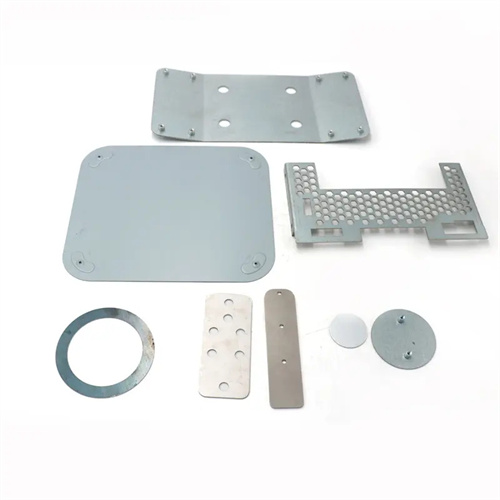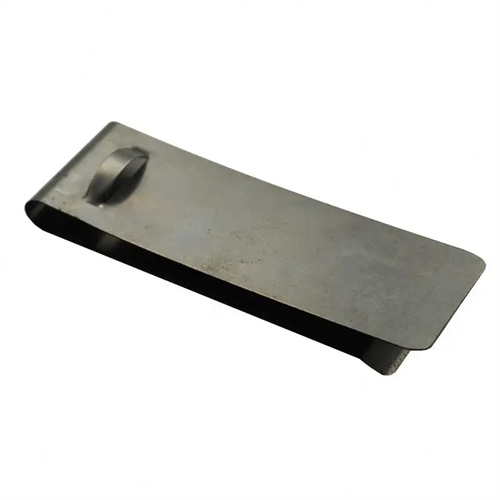Cross-section analysis of blanking parts
The cross-sectional quality of blanking parts is a key indicator of blanking process performance. Its formation is closely related to the three stages of the blanking process: elastic deformation, plastic deformation, and fracture separation, exhibiting distinct stratification. A typical blanking part’s cross-sectional surface consists of four components: a fillet, a bright zone, a fracture zone, and burrs. The shape and size of each component reflect the rationality of the blanking process parameters. In-depth analysis of the formation mechanisms and influencing factors of each component provides a key basis for optimizing die design and process parameters, thereby improving the quality and stability of blanking parts.

The fillet band is located at the outermost layer of the cross section of the blanking part and is formed during the elastic deformation and plastic deformation stages at the initial stage of blanking. When the punch begins to contact the sheet metal and presses down, the edge of the sheet metal undergoes plastic bending under the action of the bending torque, causing a rounded transition at the contact point between the sheet metal and the punch and die cutting edges. The size of the fillet band mainly depends on the plasticity of the material, the thickness of the sheet metal, and the blanking gap. The better the plasticity of the material, the wider the fillet band; the thicker the sheet metal, the more obvious the fillet band; and a larger blanking gap will aggravate the bending deformation of the sheet metal, causing the fillet band to increase in size. For precision blanking parts with strict requirements, it is usually necessary to remove the excessive fillet band through a subsequent trimming process to meet the assembly requirements of the parts.

The bright band is the highest-quality portion of a blanked part’s cross-section, exhibiting a flat and smooth appearance. Its formation stems from the intense shear flow of the material during the plastic deformation stage. Under the extrusion of the punch and die, the material near the cutting edge undergoes plastic shear, stretching the metal fibers and squeezing them together, forming a shiny, rolled layer on the sheared surface. The width of the bright band is closely related to the material’s plasticity, the blanking clearance, and the sharpness of the die cutting edge. Materials with good plasticity produce wider bright bands. A reasonable blanking clearance (generally 5%-15% of the sheet thickness) ensures uniform plastic deformation and symmetrical distribution of the bright band. A sharp cutting edge reduces material tearing and maintains the integrity of the bright band. In actual production, the proportion of the bright band is a key indicator for evaluating blanking quality. The width of the bright band on precision blanked parts can reach over 80% of the section thickness.

The fracture zone is located below the bright band, with a rough surface and obvious tear marks. It is the product of brittle fracture of the material during the fracture separation stage. When the plastic deformation of the sheet metal reaches its limit, microcracks first appear in the material at the edges of the punch and die. As the punch continues to press down, the cracks expand along the direction of maximum shear stress and eventually penetrate the sheet metal, forming a fracture zone. The roughness of the fracture zone depends on the path of crack propagation. If the upper and lower cracks are smoothly connected, the fracture zone is relatively flat. If the gap is unreasonable and causes crack misalignment, an uneven tear surface will be formed. The blanking gap is a key factor affecting the quality of the fracture zone. If the gap is too small, the cracks cannot be properly connected, and a layer formed by secondary shear will appear. If the gap is too large, the crack propagation path is tortuous, the fracture zone is rough, and the inclination increases.

Burrs are tiny metal protrusions on the edge of the cross section of a blanked part. Their formation is related to incomplete crack propagation during the fracture separation stage. When the upper and lower cracks penetrate, part of the material fails to separate completely and is stretched under the action of tension to form burrs. The size of the burr is affected by the blanking clearance, the state of the die cutting edge, and the material properties. A clearance that is too large or too small will cause the burr to increase; when the die cutting edge is worn, the burr will become significantly coarser; and materials with good plasticity are more likely to produce continuous burrs. Although a small amount of burrs can be removed through subsequent deburring processes, excessive burrs will increase production costs and even affect the assembly accuracy and safety of parts. Therefore, controlling burr generation by optimizing the blanking clearance, maintaining the sharpness of the cutting edge, and other measures is an important part of blanking process control.
